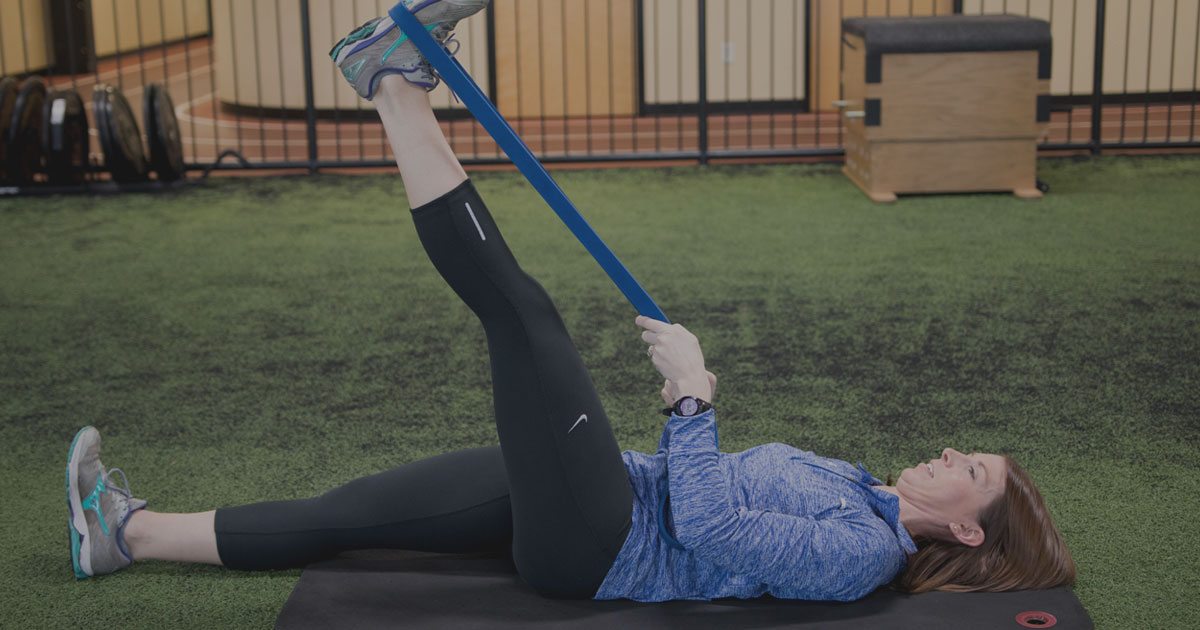No matter how you spend your time – being physically active or sitting at a desk – you can benefit from regular stretching.
Stretching, when done properly, lengthens your muscles and tendons, which increases range of motion, helps to prevent inquiries and improves physical performance (both in physical activities and regular functional movements and daily tasks).
Types of stretches
There are two types of stretches: dynamic and static. Static stretching is a long, sustained stretch with the goal of making a change within the tissue mobility. Dynamic stretching is a short duration stretch with the goal of improving neuromuscular function.
How long to stretch?
Research has shown improvements within the length of the muscle occur when a static stretch is held for 3-5 minutes, 4-6 days a week.
When should you stretch?
Static stretching causes tears in collagen bonds, resulting in the increased length of a muscle. These tears lead to an inflammatory reaction which potentially could reduce the performance of the muscle, therefore static stretching is best done after exercise.
Below are the most common lower body stretches, along with variations if you need assistance.
Quad Stretch (standing and assisted)
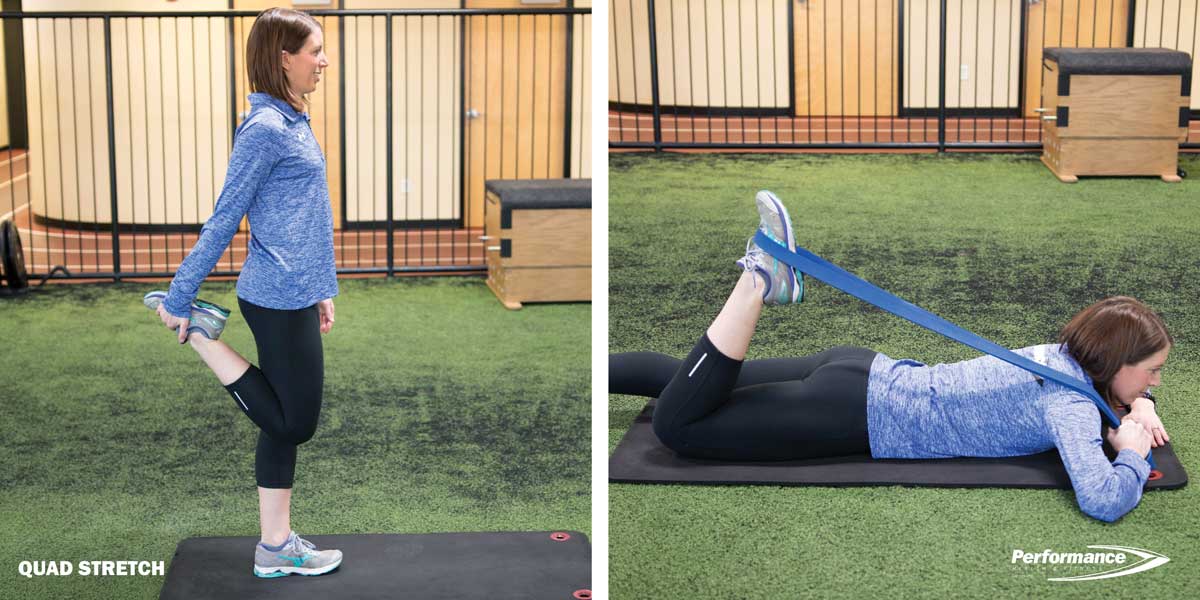
1) Begin standing upright or laying on stomach.
2) Gently pull heel up towards your buttocks using your hand or a strap until a stretch is felt in the front of thigh while maintaining an upright torso.
3) Remember not to arch/extend the back.
Kneeling Hip Flexor Stretch
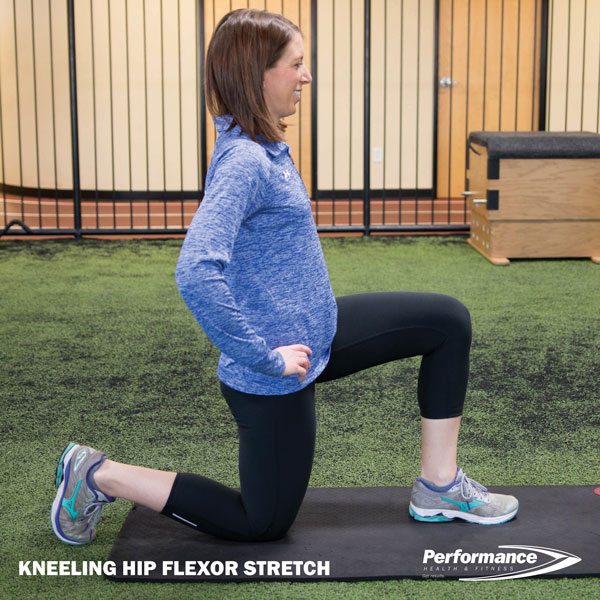
1) Begin in half kneeling position with front knee at 90 degrees flexion and back leg perpendicular to floor.
2) Next, perform posterior pelvic tilt (tuck tailbone) until a stretch is felt in the front of hip while maintaining an upright torso.
3) Slightly shift pelvis/hip forward until increased stretch is felt.
4) Remember not to arch/extend the back!
Hamstring Stretch (against a wall or assisted with a band)
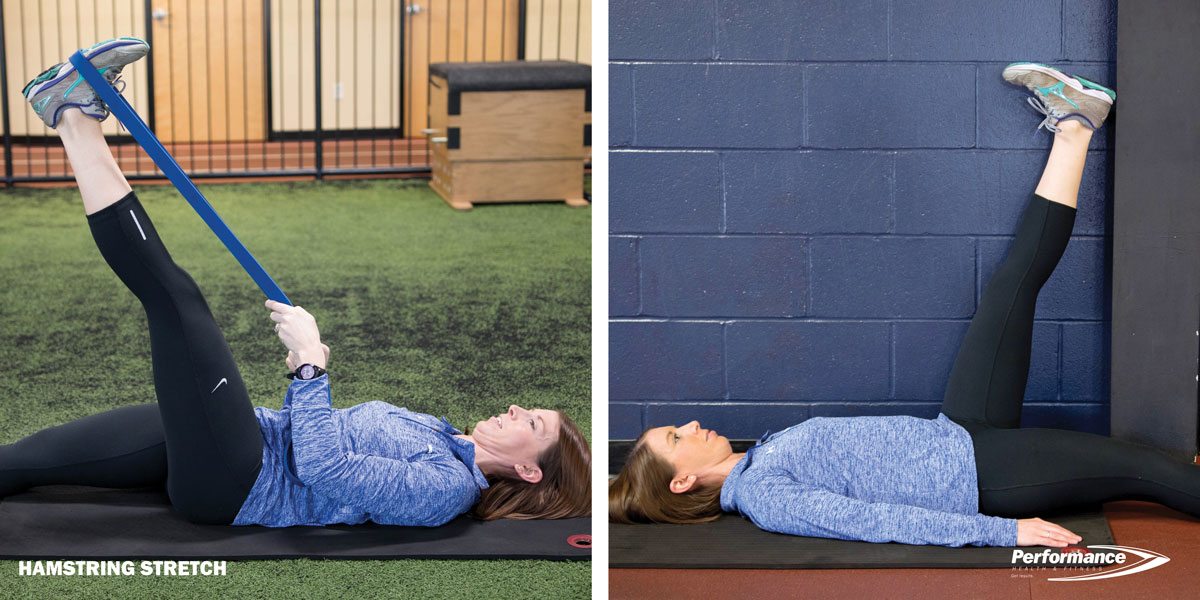
1) Lie on your back and place a strap (belt or towel) around your foot.
2) While keeping your opposite leg straight on the floor, gently pull on the strap to assist in raising your leg up until a stretch is felt in the back of the leg.
*This movement can also be performed by propping your heel against a wall or door frame with your opposite leg through the door.
Figure-4 Hip Stretch
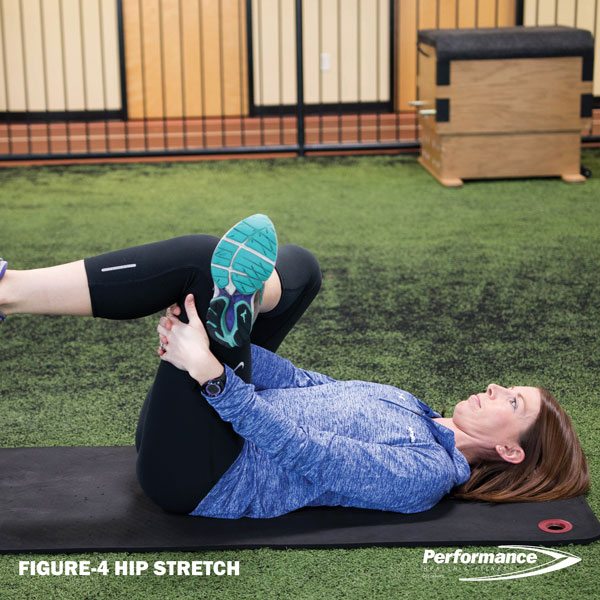
1) Start by laying on your back with both knee bent.
2) Cross one leg over the other knee.
3) Gently pull both legs up towards your chest until a stretch is felt in the posterior hip.
Standing Calf Stretch
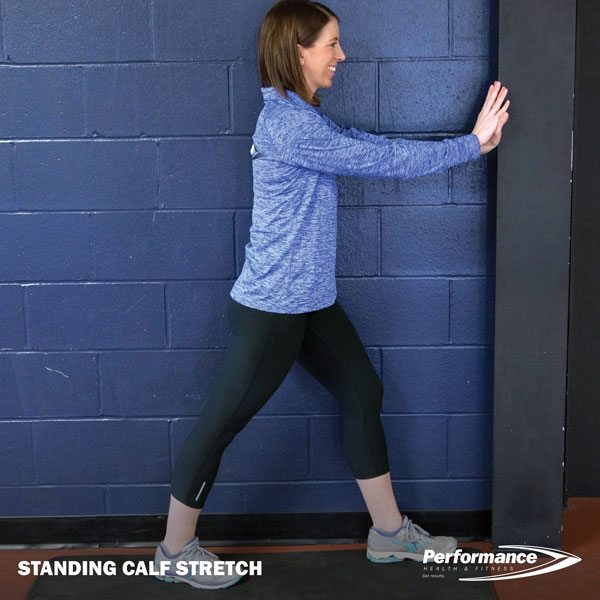
1) Begin by standing in front of a wall. Step one foot backwards while keeping both toes pointed forwards.
2) Keep the back knee straight and lean forwards towards the wall.
3) Support yourself with your arms as you allow your front knee to bend until a gentle stretch is felt in the back lower leg.
*Repeat with the back knee slightly bent to stretch the calf.






